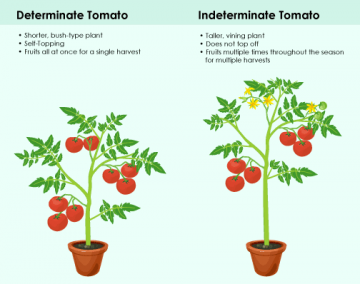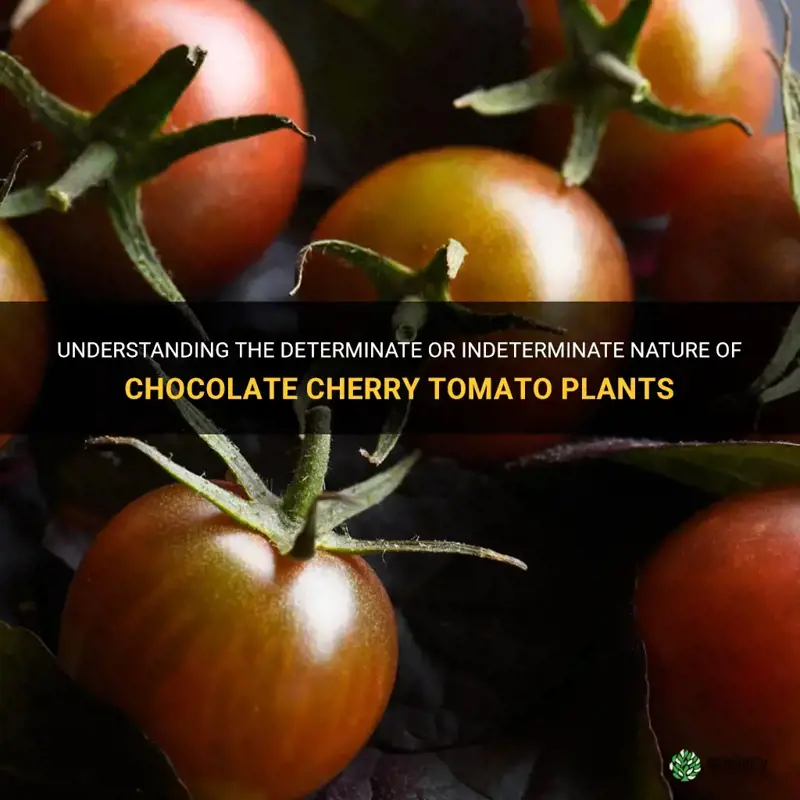Unlock the Secret: Are Cherry Tomato Plants Determinate or Indeterminate?

Every time I spot a cherry tomato seedling stretching toward the spring sun, I get a little thrill—because if you know what to expect from your plant’s growth habit, you can set yourself up for a jaw-dropping harvest. Let me pull back the curtain on some hard-won secrets about determinate vs. indeterminate cherry tomatoes, peppered with mistakes I’ve made so you can skip right to success.

What “Indeterminate” Really Feels Like in Your Garden
If you’ve never hosted an indeterminate cherry tomato—imagine a green tornado politely asking to camp out along your fence. One summer, my ‘Sungold’ literally grew taller than the gutters and spilled across three cages. With indeterminates, there’s no off switch during the growing season; they’ll keep climbing until cold nights finally say “enough.”
Compare this to determinates—which cue their finale early and hold back on size. You’d almost think something was wrong if you’re used to regular tomatoes: one minute tiny clusters of fruit just appear everywhere, then it’s over.

Here’s how I finally learned to tell: after getting stung by buying an unlabeled variety at a community plant swap (bad move), I waited for two weeks past transplanting—sure enough, vines kept shooting upward and blossoming long after the first marbles ripened below. Classic indeterminate.
Not Every Cherry Tomato Grows Wild—Variety Secrets You Won’t Find on Most Tags
It blew my mind when I first realized not every cherry tomato rampages through the trellis like a beanstalk gone rogue. After trialing over 15 varieties (yes, my neighbors got tired of free tomatoes…), these are your go-to compact picks:
- ‘Tiny Tim’ fits beautifully in narrow pots—mine thrived next to a south-facing city window.
- ‘Red Robin’ barely needed tying; it flowered and fruited before any full-sized leaves unfurled.
- ‘Patio Choice Yellow’ really was designed with space-strapped growers in mind—I got over 100 little fruits from one 14-inch container.
So don’t blindly trust racks labeled “cherry tomato”—either google that variety name before handing over cash or chat up fellow gardeners who’ve grown it recently.

Pro secret: My shortcut? If you’re stuck with mystery plants, watch them closely between weeks 3–5. Determinates bulk up sideways fast and set flowers almost everywhere at once; indeterminates just keep reaching for sky and sun.
Care Differences That Make or Break Your Season
Here’s where experience really counts. The textbooks say “use support,” but if you’ve ever fished fallen clusters out of mud or snapped main stems salvaging a toppled tomato cage mid-July thunderstorm (guilty!), you’ll go bigger every year:
-
Indeterminates need heavy-duty support BEFORE they ask for it:
My best solution is remesh panels—the steel grids meant for concrete work—stuck upright like long fences. I cut them with bolt cutters ($19 investment paid off countless times). Or drive wooden stakes deep enough that hurricane-type winds won’t wobble things. -
Prune lower leaves EARLY & OFTEN:
First summer, blight snuck in because I thought pruning sounded harsh. Now, as soon as leaves touch soil, snip-snip! Clean shears prevent spreading disease (rub alcohol between plants). -
Leave one strong leader/main stem:
I was hesitant at first… but thinning extra side shoots means easier harvesting and less mess come August thunderstorms. -
Water DEEPLY—not daily sprinkles:
The year my yields were best (2018), we watered twice weekly: slow soaks until about an inch had pooled atop our mulch—then walked away until dry again four inches down.

Container Growing: My Non-Negotiables
I used to believe all container sizes worked for cherries—but by July heatwaves, rootbound plants sulk and stop fruiting! Here’s the magic number: nothing under five gallons per plant. If I’m using fabric grow bags, minimum is seven gallons—not negotiable if you want non-stop pickings through fall.
Early staking is even more crucial here—I lost count of how many topples flattened stems because winds caught lush foliage in undersized pots!
If space is ultra-tight, try ‘Red Robin’ or ‘Tiny Tim’. Regular indeterminates just laugh at small containers—and leave you cursing midseason yield slumps.

Classic Rookie Pitfalls & Veteran Fixes
-
“Why are leaves turning splotchy?”
Usually mildew from too-dense canopies after wet spells—grab scissors and thin centers right away; don’t wait for spots to climb higher! -
“My cherries split open overnight!”
This drove me nuts until someone taught me steady watering routines (<3 inches lateral mulch helps); erratic dry/wet cycles cause skins to burst at peak ripeness. -
Missed harvests leading to lower yields:
Cherries are programmed by evolution: pick often (I use an old colander tucked by my back door) or production tapers off shockingly fast as fruits pile up unharvested.
Must-Have Tools for Happy Plants & Happier Gardeners
After years of improvisation…
- Forget stock wire cages unless they’re heavy-gauge;
- Create soft ties from old T-shirts (rip into strips);
- Heavy-duty gloves save skin;
- Keep cheap brushes handy for pollinating during rainy spells (just brush flowers gently—a trick that probably added 20% more fruit in foggy July weather).
Insider Confidence Trick For Choosing Next Season’s Plant
Ask nursery staff this question: "How tall does this variety typically get here?" If they answer “around waist-high,” odds are it's determinate; “over your head” always means indeterminate.
Or better yet: plant both types side-by-side once—and let results be your teacher. The explosion of flavor differences and growth habits makes next spring much easier to plan without second guessing yourself—or ending up with accidental green jungles eating prized herb beds!
Ready To Grow Like a Pro?
- Check if your seeds/plants actually match your available space—it truly pays off!
- Set up those supports while transplants still look puny.
- Start pruning young; stay ahead of disease by controlling airflow.
- Deep-water consistently—and lean into thick mulch right from day one.
- Pluck ripe cherries regularly—it’s addictive!
- Experiment! A ten-dollar packet each of ‘Sungold’, ‘Tiny Tim’, or new hybrids is worth more than four gardening books combined when it comes to learning what works in YOUR patch.
Cherry tomatoes aren’t just food—they’re stories growing on vines all season long! With these insider moves under your belt, get ready for baskets overflowing—and neighborhood envy when sunlight glints off those bite-sized beauties every summer afternoon!



